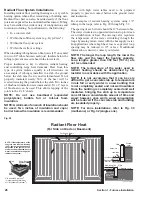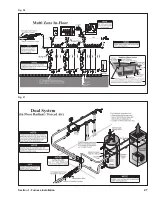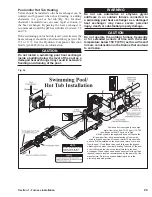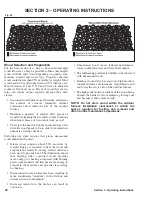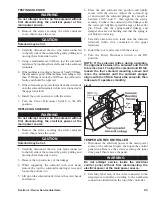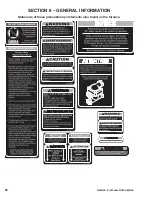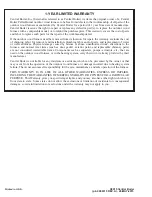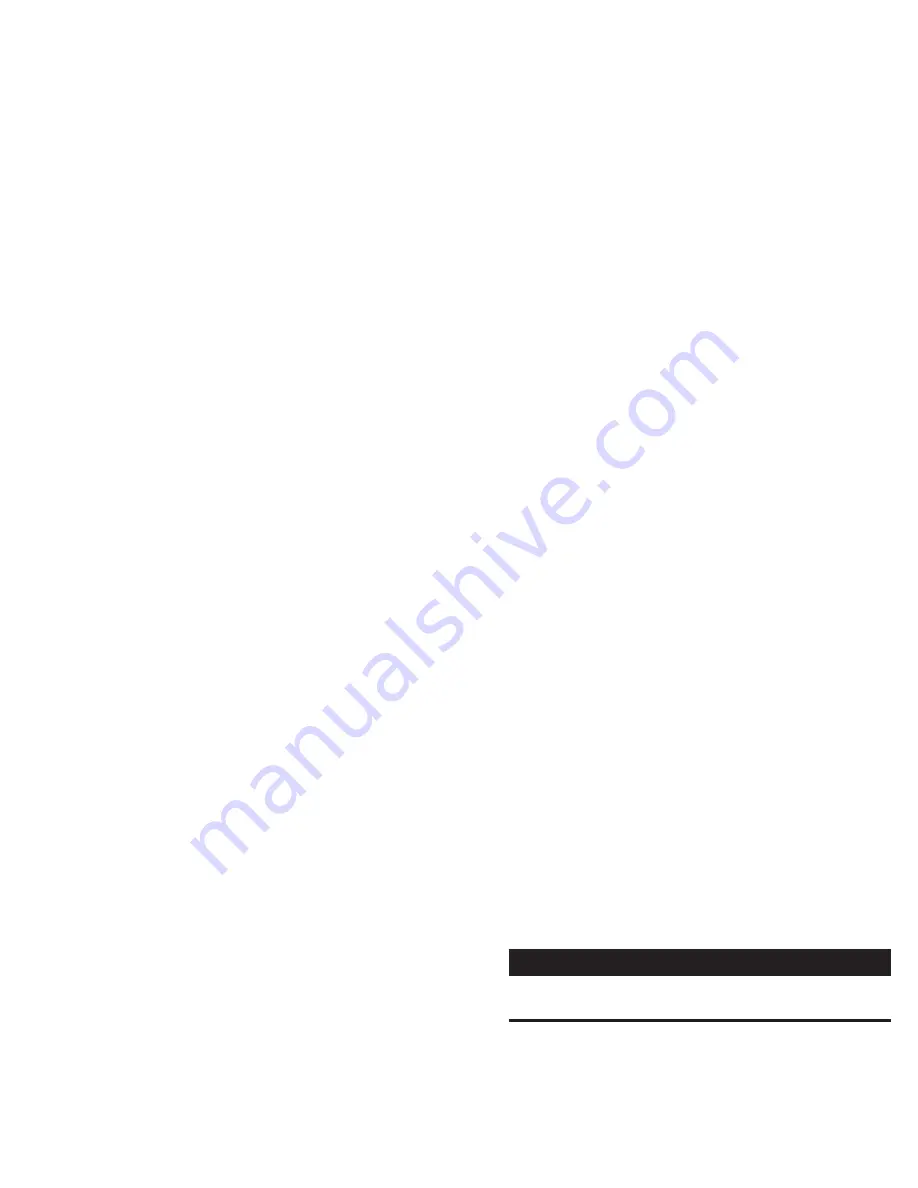
39
Section 3 - Maintenance Instructions
WATER QUALITY AND MAINTENANCE
An important part of furnace maintenance is controlling
the quality of the water in the furnace. Central Boiler
supplies a pH tape and a nitrite test kit with each new
furnace.
Water Test Kits and Test Results
It is very important to keep record of water test results
(include the date, pH and nitrite level). If subsequent
water tests indicate a pH that is too low and/or a nitrite
level that is too high, the results should be verified using
a new test kit.
The pH test strips and Permanganate Reagent each have
a varying shelf life that can affect their accuracy. Test
kits should be stored in a dry area at room temperature
to obtain maximum accuracy over a longer period of
time. The area in the access panel door where the test kit
is located upon arrival from the factory is intended for
shipping purposes only. The kit should be moved to an
area as stated above as soon as possible after delivery.
The pH of the water in the outdoor furnace will not
decrease unless fresh water is added to the furnace. The
nitrite level of the water in the outdoor furnace will not
increase unless Corrosion Inhibitor Plus™ is added.
For example, if a water test in the fall of the year indicates
a pH of 8.5 and a nitrite level of 20 drops by nitrite test
(2000 ppm) and no water or Corrosion Inhibitor Plus™
is added, a water test the following spring must indicate
a pH of at least 8.5 and a nitrite level of no more than 20
drops by nitrite test (or slightly less, due to evaporation).
If the test indicates a significantly lower pH level or
higher nitrite level, perform another test with a new test
kit to verify the results. If the results are +10% different
using a new test kit, either water or Corrosion Inhibitor
Plus™ has been added to the system.
If a test is conducted and verified that indicates a high
pH (above 9.5) and/or nitrite level (above 30 drops),
DO NOT ADD MORE CORROSION INHIBITOR
PLUS™. Adding Corrosion Inhibitor Plus™ increases
nitrite and pH levels. The outdoor furnace should be
drained until the water in the sight gauge reaches the
bottom of the sight gauge; then add fresh water until
it is 1 inch below the FULL mark on the sight gauge.
Circulate the water for 24 hours and test the water again.
Testing Supply Water
Before filling the outdoor furnace with water, test a
sample of the supply water that will be used to fill the
outdoor furnace (softened water is recommended).
1. Collect a small sample of the water to be used to fill
the outdoor furnace in a clean container.
2. Dip the pH test strip from the test kit in the water.
Shake excess water off the test strip. Compare
the color of the test strip to the chart provided to
determine pH level.
3. If the pH level is between 6.5 and 8 and there are
no other known water quality problems, then the
outdoor furnace may be filled with this water.
4. If the water to be used to fill the outdoor furnace has
a pH level of less than 6.5 or greater than 8, a sample
of the water should be sent to a water quality test
lab for recommended treatment, the water should
be conditioned, or water should be supplied from a
different source.
Corrosion Inhibitor Plus™ and Initial
Treatment
Central Boiler Corrosion Inhibitor Plus™ (p/n 1650)
gives optimum protection when it is used to initially
treat the water and is then maintained at proper levels.
The initial nitrite level target is 20 drops by nitrite
test, but 20 to 30 drops is acceptable. Do not exceed
treatement of higher than 30 drops by nitrite test.
The recommended initial treatment rate for the outdoor
furnace is specified by units. One unit of the Corrosion
Inhibitor Plus™ is a 1-gallon container. The normal rate
for the initial treatment is 4 units.
NOTE: If the system has a larger than normal
water capacity, more Corrosion Inhibitor Plus™
should be added at a recommended rate of one
unit per 180 gallons of water.
1. Remove the vent cap and add the recommended
amount of Corrosion Inhibitor Plus™ through the
vent pipe at the top of the outdoor furnace. Replace
the vent cap.
2. Immediately fill the outdoor furnace to 1 inch below
the FULL level mark on the sight gauge.
3. Start the pump(s) and circulate water for 24 hours.
Testing Treated Water in the Outdoor
Furnace
1. To obtain a system water sample, it will be necessary
to remove the tube from the sight gauge mounting
hole and bend it away from the outdoor furnace.
Before collecting the sample, open the valve and
drain about a quart of water from the sight gauge
tube; then carefully fill the sample container without
contaminating the sample. Be sure to properly
install the sight gauge tube and close the valve
when finished. The water in the sight gauge valve
and tube will drain when the valve is closed.
CAUTION
The water in the sight gauge may be hot. Use
caution when obtaining a sample.
2. If no antifreeze is present in the water, use Test Kit
(p/n 405). If antifreeze has been added to the water,
use Test Kit (p/n 597).


